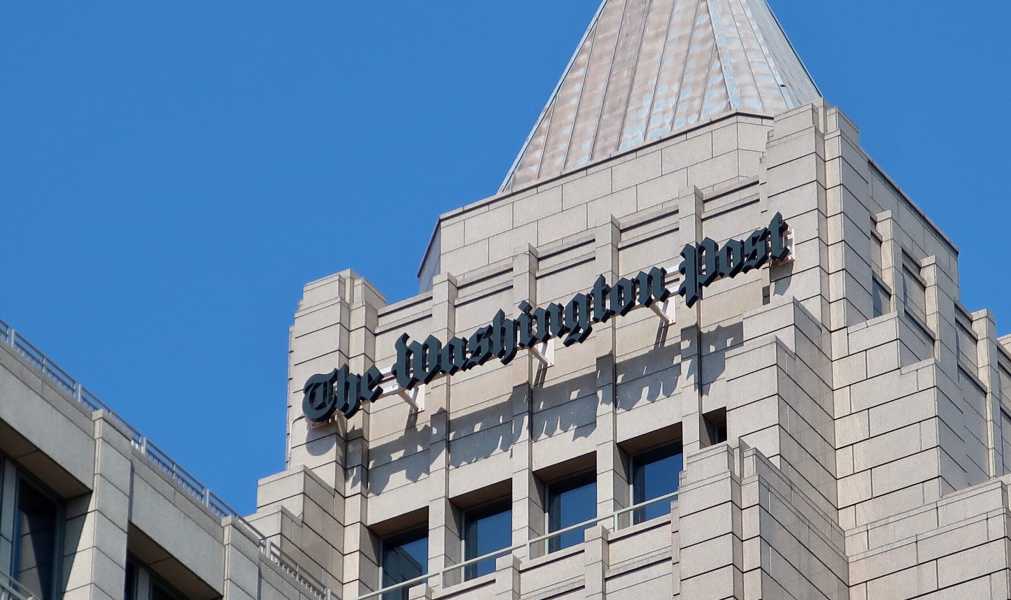Economics rather than ideology drives the bias of the press.

Credit: image via Shutterstock
The left-wing bias of the mainstream media may have been more evident in the recent election than ever before, but its existence has long been recognized, even admitted by the media’s own journalists. As far back as December of 2013, the New York Times’ Peter Baker and Mark Leibovich, NBC’s Kelly O’Donnell, and CNN’s Jake Tapper all responded with an emphatic “yes” when asked by the POLITICO Playbook Breakfast panel host Mike Allen whether they and their colleagues tend to be liberal.
What has yet to be satisfactorily explained is the cause of this progressive bias. Some argue, as Leibovich did during the POLITICO panel, that today’s reporters lean left because they tend to live in places where there are few conservatives. “I live in northwest Washington,” he explained. “None of my neighbors are evangelical Christians. I don’t know a lot of people in my kid’s preschool who are pro-life.”
Others, like former New York Times correspondent and Free Press co-founder Nellie Bowles, put the blame for media bias on senior editors and broadcast news producers. In her recent book, Morning After the Revolution, she describes how young journalists are systematically pressured by their bosses to slant stories—framing outbreaks of progressive violence as “peaceful protesting,” for example, while simultaneously dismissing any critics of such activism as “right-wing extremists.”
And then there are media analysts like the Idea Grove blogger Scott Baradell who try to explain the liberal bias of modern reporters as a result of a psychological need to improve the world. “Journalists generally don’t enter the profession to make a boatload of money,” Baradell says, but “because they want to make a difference.” And since “change is inherently anti-conservative,” most reporters “are relatively progressive in their politics.”
There is undoubtedly some truth in all three of these explanations for today’s media bias, but also good reasons to doubt their adequacy, even in combination. If, for example, we are to believe that many journalists are liberal just because of who they regularly associate with—what many conservatives disparagingly refer to as “the mainstream media bubble”—then what kind of reporters are they? Isn’t it a journalist’s job to explore unfamiliar places and tell the rest of us what is really going on?
Or, if we are going to accept the Nellie Bowles theory that reporters lean left because their editors or producers do, then why are these newsroom bosses not equally influenced by the interests of their own corporate superiors? Senior executives, even if they were progressive, want to keep major advertisers from being too closely associated with a particular political viewpoint. And how do we account for the fact that Bowles’s own colleague and partner Bari Weiss was forced to quit the New York Times, not by her bosses, but by younger employees who disagreed with her editorial judgements?
And if we say that reporters are liberal because they want to make the world a better place, then how do we account for the mainstream media’s largely negative coverage of one of the most promising social movements of our time, school choice? If any cause should satisfy a journalist’s desire to improve society, is it not helping kids, especially those in poor and minority communities, to get a better education?
The big failing in all three of these explanations for leftwing media bias is their narrow focus on some personal factor—where a reporter lives, how much he or she needs to please superiors, or the desire to see oneself advancing a noble cause. For, while everyone is influenced by lifestyle and emotional circumstances, history suggests that the tendency for an entire institution to underperform or even betray its intended purpose is almost always connected to some larger economic dysfunction.
Consider the half-century-long decline in the quality of America’s public education system, from world-admired in the 1950s to a laggard in today’s international comparisons. It is not a coincidence that this falloff began shortly after President John F. Kennedy signed an executive order allowing the country’s public employees to unionize. Once school personnel had representatives powerful enough bypass local school boards and negotiate directly with state legislators—even finance their election campaigns—the statutory climate increasingly prioritized the pay and benefits of teachers and administrators over the needs of their students.
Nor is it an accident that the crime and disorder that have come to be associated with America’s largest cities dramatically increased after the passage of President Lyndon Johnson’s Great Society legislation which, among other things, subsidized the creation of community action groups in major urban areas. As Stanford University public policy professor John F. Cogan documents in his 2017 book, The High Cost of Good Intentions, this federal funding of competing power centers made it much more difficult for mayors and their elected councils to effectively address local problems.
Even the decline of organized religion, with only 60 percent of U.S. citizens now professing a faith tradition, can be attributed to socioeconomic factors. While houses of worship were once the primary providers of healthcare, family counseling, welfare, education, and venues for public assembly and debate, today only preschool programs survive. As a result, believers of all persuasions have less practical reason to affiliate with a neighborhood church, synagogue, or mosque.
If the dysfunctions we see in so many contemporary institutions stem from some kind of underlying economic change, then why should the increasingly progressive bias we see in modern journalism be any different? Especially when the probable cause is so easy to identify.
Unlike times past when there were only three broadcast networks, when most major newspapers made enough money to print both morning and afternoon editions, and when weekly magazines like Look and Life were widely read, the financial viability of today’s news organizations is far more precarious.
Indeed, the most recent edition of Cision’s annual State of the Media Report identifies “downsizing and reduced resources” as the single biggest challenge to modern journalism. One need only look at the Washington Post, formerly both a great newspaper and regional television broadcaster, which now barely survives on the charity of Amazon founder Jeff Bezos.
What this financial pressure has done to news providers, and especially the legacy media, is give them a clear incentive to help the modern left engineer the kind of hierarchical, top-heavy political system where all the important decisions are confined to a few areas. Then, instead of having to cover far-flung cities and states—what Supreme Court Justice Brandeis famously dubbed America’s “laboratories of democracy”—they can concentrate their limited resources on just Washington, D.C., lower Manhattan, and possibly Hollywood or Silicon Valley.
Subscribe Today Get daily emails in your inbox Email Address:
Washington itself has already become a convenient supermarket of think tanks, which gives locally based reporters easy access to expertise on a wide variety of topics for little more than the cost of a Metro card top-up or an Uber ride. Realizing the progressive dream of a bigger, more comprehensive government would only further reduce the cost of delivering what passes for news.
Of course, not all reporters and their media colleagues are ideologically biased by their profession’s economic circumstances, any more than all public-school teachers are intellectually persuaded by the woke arguments their unions make to increase member benefits and reduce accountability for student achievement. But, so long as the price of adequately covering a country like the U.S. remains steep, the more news-gatherers are going to be tempted, both consciously and unconsciously, by the budgetary advantages of plying their trade in a more centralized society.
Solving this problem will not be easy, as even the recent Trump landslide does not appear to have triggered any serious media soul-searching beyond the already obvious recognition that today’s reporters are out-of-touch with a majority of voters. Only when the press begins to acknowledge—and consciously compensate for—the strong economic interest it has in a consolidated administrative state will the public once again be able to have more trust in the Fourth Estate.
Sourse: theamericanconservative.com






